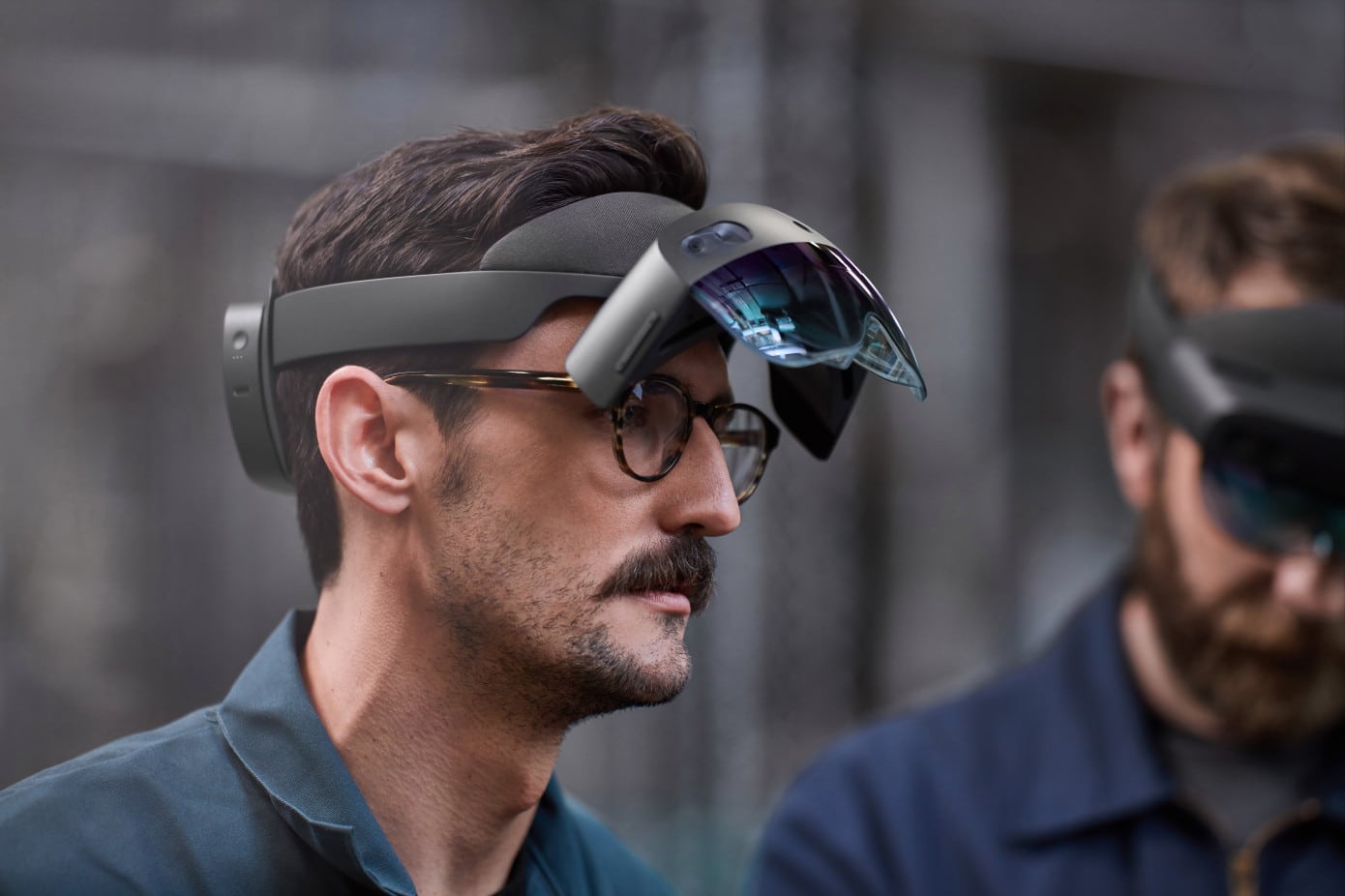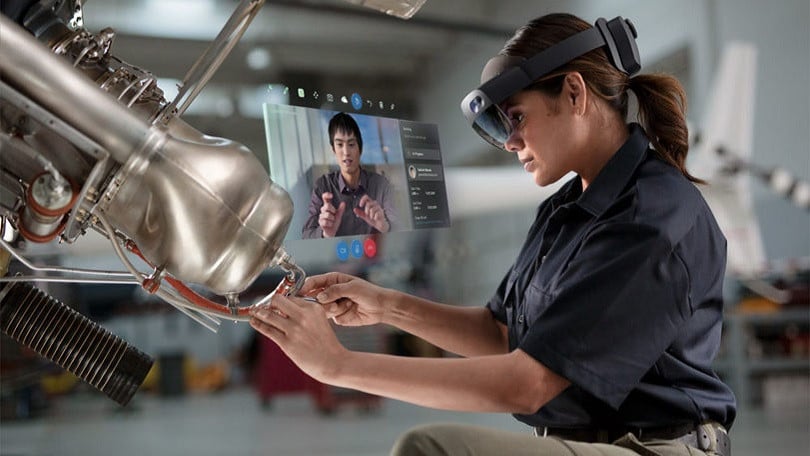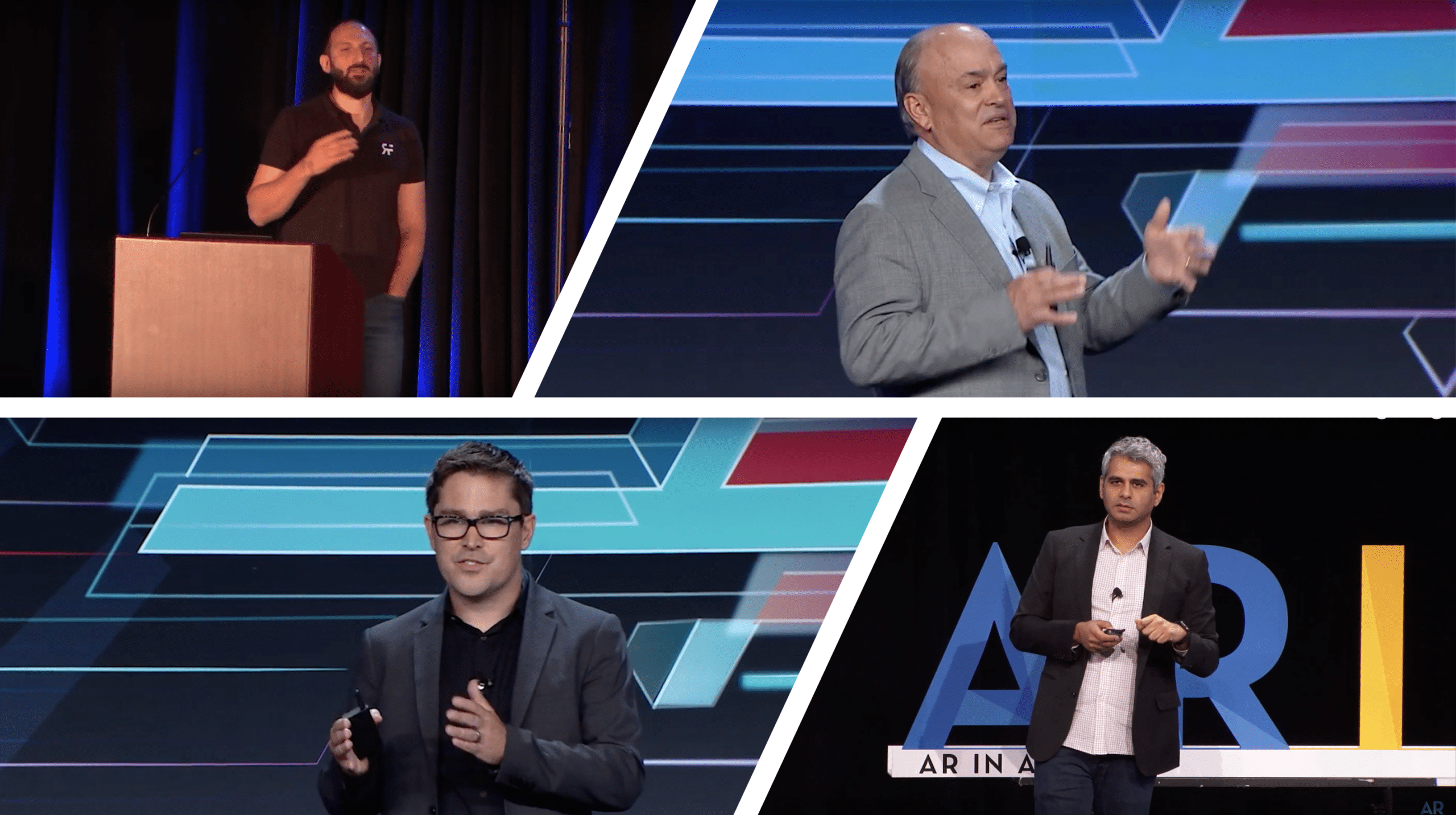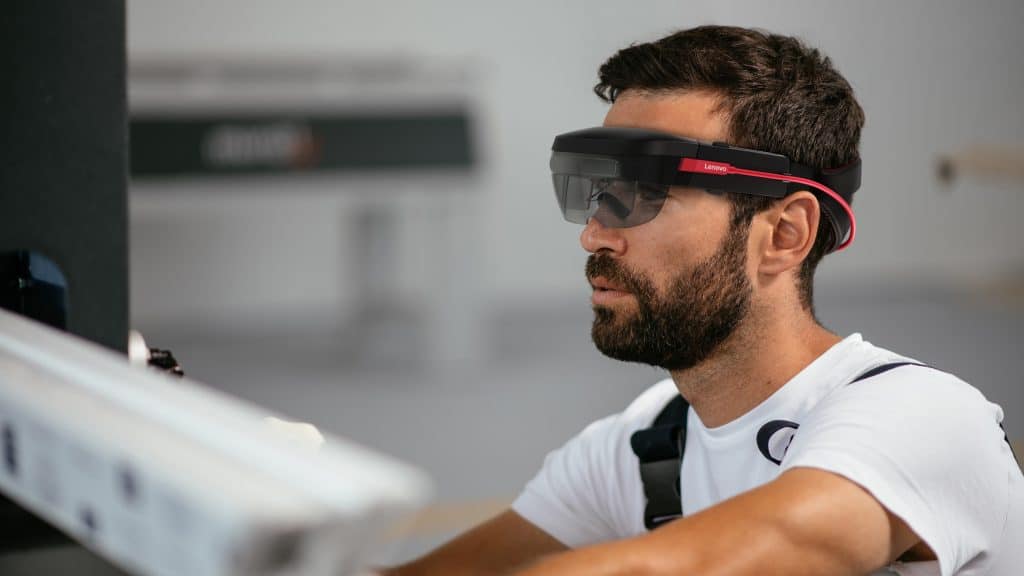
This post is adapted from ARtillery Intelligence’s latest report, Industrial AR: Benefits & Barriers. It includes some of its data and takeaways. More can be previewed here and subscribe for the full report.
Since our last report on enterprise AR, many of the benefits we examined (e.g. operational efficiencies) have been validated through real industrial deployments, as explored in case studies later in this report. Adoption challenges (e.g. organizational inertia) have likewise been validated.
But before diving into deeper strategic analysis of all these moving parts, let’s level set on some of the fundamentals of AR in industrial settings. What are the formats being deployed today? What are the benefits they’re demonstrating? And what’s the projected market size for industrial AR?

Industrial AR Flavors
Industrial AR takes several forms. The holy grail – and eventually prevalent format – is headworn AR, where visualization software is installed on AR glasses such as Microsoft’s HoloLens. Nearer term deployments also include smartphone or tablet-based AR, as examined later in this report.
Beyond AR’s vessels, there are also varied functions. For example, remote assistance (a.k.a. “see what I see”) lets subject matter experts remotely view (via camera) and guide front line workers. The latter can occur through voice instructions and/or spatially-accurate line-of-site annotations.
Conversely, pre-authored AR involves programmed animation sequences that overlay machine parts with line-of-sight instructions for maintenance or assembly. Sequences are usually activated through user inputs and visual markers. The latter also helps to spatially anchor graphics.
Lastly, somewhere in between these two methods is the growing practice of recording AR sessions. This helps to capture best practices, train new users or inform future scenarios. It can also help retain institutional knowledge at a time when job turnover is high (more on that in a bit).

Industrial AR Benefits
Advantages for these and other AR formats are varied, meaning broad applicability to functions such as maintenance and assembly. Advantages map to micro-benefits such as unit economics of production; as well as macro-benefits, such as organizational evolution. Here are a few examples.
Micro-Benefits
Time to Task Completion: Line-of-sight overlays can speed up productivity up to 90 percent by replacing the process of “mental mapping” (cognitive translation of 2D instructions to 3D space).
Machine Uptime: When machines break, vendors fly experts to a job site. That creates machine downtime which has a large opportunity cost. Remote assistance eliminates the need for travel.
Error Reduction: Just as line-of-site AR instructions speed up productivity, they can lessen costly mistakes. By reducing human error from mental mapping, AR can have real bottom-line impact.
Macro-Benefits
Morale: AR’s liberation from mental mapping can reduce strain, which leads to more comfortable work. Reducing errors can also improve workplace safety, performance and self-esteem.
Longevity: The most experienced workers often do the most strenuous work (think: field maintenance). Remote assistance positions them as remote experts, thus increasing their longevity.
Institutional Knowledge: By increasing longevity, organizations collectively retain knowledge. Recorded AR sessions can meanwhile capture that knowledge to train new workers.
Drilling Down: Institutional Knowledge
To go a bit deeper on just one of the above benefits as a representative example, how can AR help companies boost and retain institutional knowledge? It can accomplish this on a few levels including delaying retirement for valued experts, as well as knowledge transfer to novice workers.
As mentioned, the timing for this is ripe as macro factors create greater levels of turnover and institutional knowledge loss than ever before. Combine these factors and you get a growing challenge to retain knowledge or transfer it to younger workers who cycle in.
“Joe, who’s worked here for 40-some years is going to retire and he’s going to take that forty-some years of domain expertise out the door with him,” said PTC’s Jim Heppelmann at the AWE show. “We’re going to hire somebody new to do what Joe did, but it’ll take them years to be as good.”
AR can combat this challenge in a few ways. First, it can turn seasoned employees into remote AR experts that guide field workers as mentioned above. Compared to their previous field work, a cushier job can delay retirement. And it accelerates knowledge transfer to all those novice folks.

“They leave the workforce but they’ve literally got 35 years of knowledge,” said Scope AR CEO Scott Montgomerie at AWE. “We can move them into a cushy call center position where they can advise younger workers that are more willing to go crawl around on their hands and knees.”
Meanwhile, as introduced above, recorded sessions can aid this process of institutional knowledge transfer. By strapping an AR headset to top-performing workers (or doing so during the above remote-assist sessions), sequences can be recorded to capture and reinforce best practices.
“While we’re working together between front-line technicians and people with decades of knowledge, we’re doing a knowledge transfer and we can record that,” said Montgomerie at AWE. “So now we can reuse that for training purposes or for continuous process improvements.”
AR also enables microlearning. The idea is that instead of the traditional method of educating someone for months or years on a given topic or skill (most of which they won’t use), deliver the right knowledge at the exact moment they need it. It’s a more efficient form of learning.
“One of the things that’s happening with AR is that we can rethink the training model from ‘in-advance’ and ‘just-in-case’ to ‘in-the-moment’ and ‘just-in-time,’ said Heppelmann.
See more details about this report or continue reading here.
For deeper XR data and intelligence, join ARtillery PRO and subscribe to the free AR Insider Weekly newsletter.
Disclosure: AR Insider has no financial stake in the companies mentioned in this post, nor received payment for its production. Disclosure and ethics policy can be seen here.

